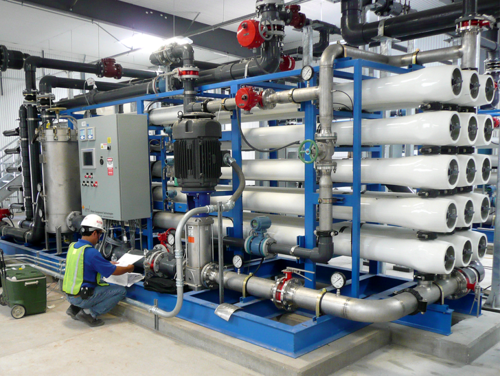Innovative PFAS Therapy Solutions for Safer Water
The boosting prevalence of PFAS contamination in water materials necessitates a crucial exam of innovative therapy options. Advanced filtration modern technologies and novel chemical therapies present appealing methods for decreasing these relentless pollutants. Furthermore, arising bioremediation techniques offer a more lasting technique to dealing with PFAS obstacles. As regulatory structures proceed to adapt, recognizing the effectiveness and scalability of these services comes to be paramount. What ramifications do these advancements hold for public health and wellness and ecological restoration, and how can stakeholders efficiently implement them in varied contexts?
Introduction of PFAS Contamination
PFAS contamination has arised as a substantial environmental and public health issue. Per- and polyfluoroalkyl compounds (PFAS) are a group of synthetic chemicals understood for their determination in the atmosphere and body, leading them to be generally described as "for life chemicals." These substances have actually been extensively made use of in numerous markets, including firefighting foams, water-repellent fabrics, and food packaging, largely due to their water- and grease-resistant homes.
The extensive use PFAS has resulted in their detection in dirt, water supplies, and even in the blood of humans and pets. Researches have actually linked PFAS exposure to numerous wellness concerns, including developing impacts in babies, immune system dysfunction, and numerous kinds of cancer. Additionally, the environmental persistence of these substances complicates their deterioration and elimination, raising concerns concerning long-lasting ecological influences.
Regulative bodies are progressively executing stringent guidelines to monitor and minimize PFAS levels in alcohol consumption water and other environmental tools. As awareness of PFAS contamination expands, it has become crucial for communities and sectors to seek reliable treatment remedies to alleviate exposure and secure public health.
Advanced Purification Technologies
As the necessity to deal with PFAS contamination escalates, advanced purification innovations have actually become a crucial component in the removal efforts intended at eliminating these consistent chemicals from water sources. These technologies take advantage of innovative devices to successfully target and capture PFAS substances, which are notoriously resistant to conventional therapy techniques.
One of one of the most encouraging techniques is making use of granular activated carbon (GAC), which adsorbs PFAS particles as a result of its high surface area and porous framework. This approach has been commonly executed in both metropolitan and commercial settings, showing significant reductions in PFAS concentrations. Furthermore, ion exchange materials have actually gained traction, particularly created to uniquely bind PFAS ions from water, hence facilitating their removal.
Membrane filtering innovations, such as reverse osmosis and nanofiltration, additionally reveal efficacy in PFAS removal by physically separating pollutants from water - pfas management. These systems can accomplish high levels of purity, making them appropriate for alcohol consumption water applications
Chemical Therapy Technologies
Many chemical therapy developments are being discovered to effectively deal with PFAS contamination in water supplies. One promising method involves making use of innovative oxidation procedures (AOPs), which use effective oxidants such as ozone, hydrogen peroxide, or chlorine dioxide incorporated with UV light to damage down PFAS substances right into less damaging compounds. This method has demonstrated efficiency in research laboratory setups, showing potential for scalability in real-world applications.
Another cutting-edge approach is the growth of ion-exchange materials specifically developed to target PFAS. These resins can uniquely adsorb PFAS substances from water, enabling their removal throughout therapy processes. Recent innovations have actually boosted the effectiveness and capability of these resins, making them a favorable alternative for water therapy facilities.
In addition, scientists are examining making use of chemical agents like persulfate and ferrous ions to improve the deterioration of PFAS in contaminated water. These representatives can induce chemical responses that promote the break down of persistent PFAS substances.
Emerging Bioremediation Methods
Current improvements in chemical treatment technologies have led the way published here for discovering bioremediation methods as a viable option for addressing PFAS contamination. Bioremediation uses the all-natural metabolic procedures of bacteria to break down or transform contaminants, making it an enticing technique for taking on persistent impurities like PFAS.
Arising methods in bioremediation include making use of genetically crafted microorganisms that can particularly target and damage down PFAS substances. These microbial strains are being established for their boosted deterioration capabilities, boosting the efficiency of the remediation procedure. In addition, researchers are checking out the possibility of plant-assisted bioremediation, where certain plant species may uptake and withdraw PFAS from infected soil and water.
One more appealing strategy is the application of bioaugmentation, which entails introducing valuable microorganisms into contaminated atmospheres to increase the destruction of PFAS. This method can promote much faster remediation timelines and boost general performance.

Governing Frameworks and Standards
A comprehensive governing structure is essential for effectively managing PFAS contamination and guaranteeing public health and wellness security. The boosting recognition of per- and polyfluoroalkyl compounds (PFAS) as toxic wastes has motivated various federal and state firms to create requirements that regulate their existence in water materials. The U.S. Environmental Security Agency (EPA) has established wellness advisories and is functioning towards setting enforceable limits for PFAS in drinking water.
State-level regulations differ significantly, useful link with some states adopting more stringent standards than those suggested by the EPA. These policies commonly include maximum impurity levels (MCLs) for certain PFAS compounds, monitoring needs, and reporting commitments for water utilities. Additionally, arising structures focus on the removal of polluted sites, emphasizing the demand for reliable treatment technologies.

Conclusion
Finally, the growth and application of innovative PFAS therapy remedies are crucial for dealing with the pervasive concern of water contamination. Advanced filtration her response technologies, chemical therapies, and arising bioremediation techniques jointly provide a multifaceted strategy to properly decrease and degrade PFAS degrees. As regulative frameworks proceed to progress, integrating these modern technologies will be essential to guard public health and wellness and restore the stability of contaminated water resources, eventually adding to a cleaner and much safer setting.